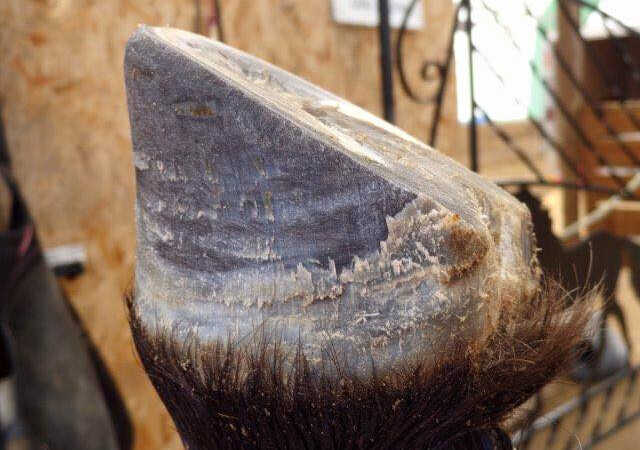

Hooves is the horny structure that covers the lower part of the feet and makes contact with the ground in hoofed animals. Cattle, goats, sheep and pigs all have hooves. Hooves suffer from a number of diseases and conditions which if not timely addressed can progress to fatal proportions.
It occurs in animals kept on soft or wet grounds either free ranging or in confinement. Soft grounds don’t offer the beneficial wear and tear which hooves need. Hard grounds eg concrete floors offer a rough surface that naturally “trims” the lower part of the hooves and this ensures that the right angle is maintained in the hooves which subsequently distributes the animal’s weight. Hoof overgrowth results in inward or outward curling. Overgrowth makes walking painful. The animal will walk on its knees or minimise walking altogether which results in less feeding and reduced milk production.
Trimming: Overgrown hooves should be trimmed immediately. Hoof trimming restores the normal hoof angles which distributes weight equally on the hoof. Overgrown hooves can cause wounds which might further result in other secondary infections. Hoof trimming should be a routine cosmetic activity which should be carried out when the animal is not under stress. The regularity of hoof trimming depends on the condition of the ground onto which animals walks. If the animal is under zero grazing, change the floor to make it rough to facilitate natural hoof “trimming”. Keenly observe the condition of your animal’s hooves and if you notice overgrowth, contact an animal health professional. Hoof trimming is a simple farm operation but where the case is extreme and the lameness has set in, you will need professional help.
Hoof examination tips: Hold leg securely to prevent injury to the animal or person. Wash the hooves if muddy for better examination, check for any overgrowth, wounds on the skin between and above the hooves, any swellings or foreign particles. When trimming, do it around the edges taking off small amounts at a time and carefully. Stop at the first sign of pink; it means you’re getting close to the blood supply. Avoid doing it during stressful time like hot weather. It is easier to trim hooves after rains when they are softer.
Laminitis is the inflammation of the laminae which is the hoof secreting portion of the foot. It is the border between the hoof and the skin of the foot. Laminitis is a common cause of lameness in livestock. Laminitis results from excessive consumption of grain, toxins in blood or severe infection. The most common cause of laminitis is from excessive intake of grain which can lead to rumenal acidosis. Acidosis results in digestive problems and leads to an inadequate blood flow to the foot.
Clinical Signs
Reluctance to walk, kneeling and heat in the feet are common signs of laminitis. When you suspect laminitis, contact your veterinary doctor immediately.
Foot rot is a bacterial disease that affects the skin between the hooves. The causative bacteria reside in soils and prefer warm and moist conditions. They disease can be transmitted from infected animals through beddings. Foot rot causes lamness and infected animals loss weight. Hoof trimming helps to prevent foot rot. Footbaths and footsoaks with zinc sulfate, copper sulphate or formalin will reduce incidences of foot rot.
 Contact Jaguza Support
Contact Jaguza Support